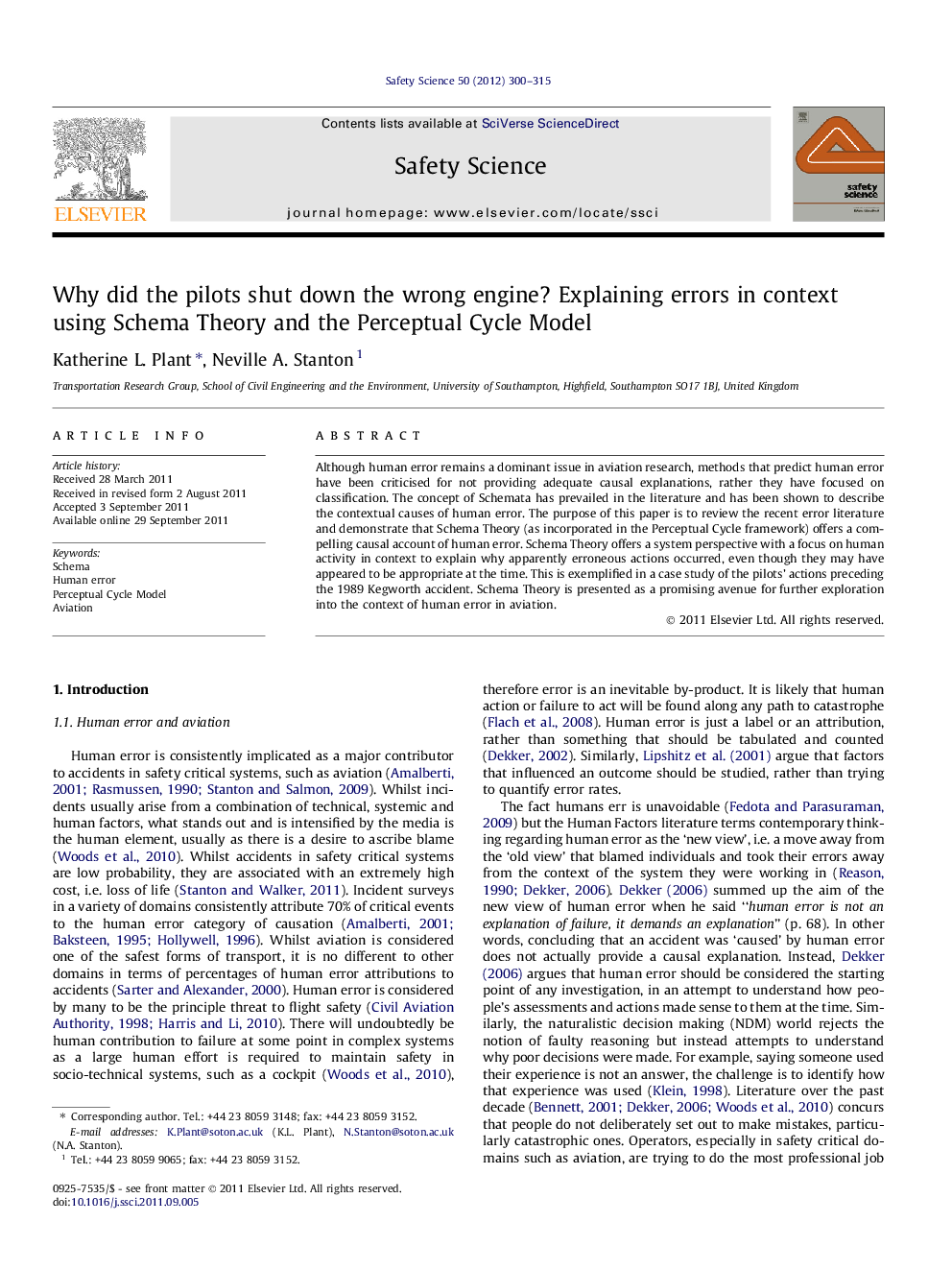| کد مقاله | کد نشریه | سال انتشار | مقاله انگلیسی | نسخه تمام متن |
|---|---|---|---|---|
| 589582 | 878710 | 2012 | 16 صفحه PDF | دانلود رایگان |

Although human error remains a dominant issue in aviation research, methods that predict human error have been criticised for not providing adequate causal explanations, rather they have focused on classification. The concept of Schemata has prevailed in the literature and has been shown to describe the contextual causes of human error. The purpose of this paper is to review the recent error literature and demonstrate that Schema Theory (as incorporated in the Perceptual Cycle framework) offers a compelling causal account of human error. Schema Theory offers a system perspective with a focus on human activity in context to explain why apparently erroneous actions occurred, even though they may have appeared to be appropriate at the time. This is exemplified in a case study of the pilots’ actions preceding the 1989 Kegworth accident. Schema Theory is presented as a promising avenue for further exploration into the context of human error in aviation.
► Schema Theory and the Perceptual Cycle Model can causally explain human error.
► A human-in-the-system explanation is provided.
► The Kegworth accident is used as a case study to apply the principles.
► Focus is aviation, but the applicability to other safety systems is acknowledged.
Journal: Safety Science - Volume 50, Issue 2, February 2012, Pages 300–315